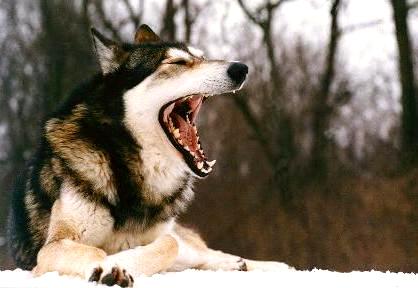Guidelines for Keeping Wolves and Wolf-Dog Hybrids

|
 In our concern for the safety of people and for the proper care of the animals, we make the following points: |
Socialized wolves or wolf-dog hybrids may also challenge the owner or others for dominance. This, too, can result in serious injury to the persons involved. Tame wolves or wolf-dog hybrids may also defend their food against people, especially children. A mere defensive bite can result in serious injuries, even though the animal "meant" no harm.
Of important consideration for those instances where pet wolves or wolf-dog hybrids do bite a person:
The opinions expressed here are designed to:
All of us at Wolf Park share these views.
For more information, or specific questions about particular animals,
please contact Wolf Park by phone at (765) 567-2265 or E-Mail Wolf Park.
Please check out some links to other sites or for rescue facilities click here.
For permission to use or for more information about wolf photographs please write Monty SloanBack to Wolf Park's Position page. |
Up to top of page |